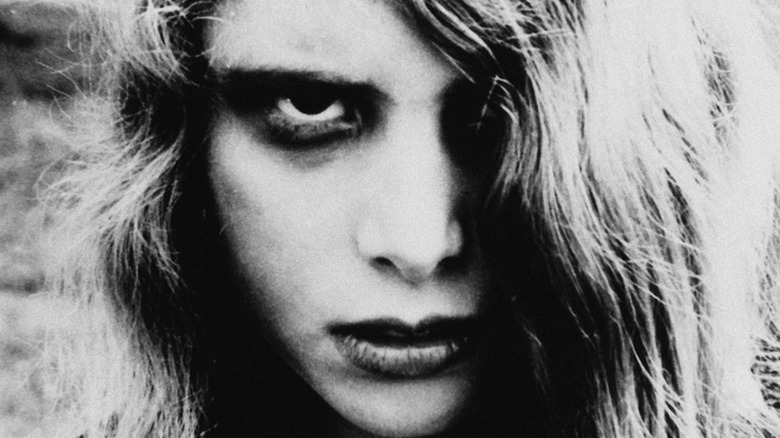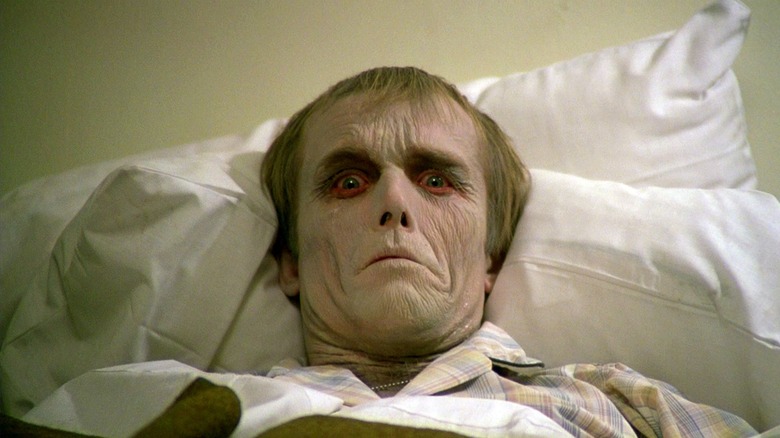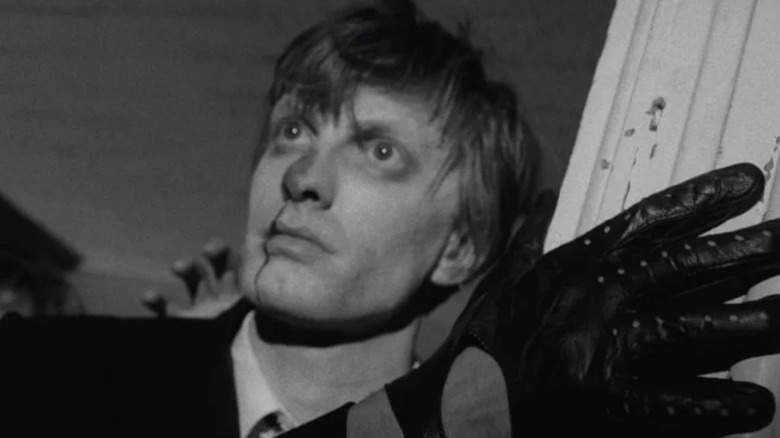This post contains spoilers for 1968’s “Night of the Living Dead.”
George A. Romero’s second-best film, “Night of the Living Dead,” takes place in a world that is already overrun by flesh-eating ghouls. These undead ghouls later emerged as the blueprint for zombie horror, their shambling gait and hunger for flesh defining what these fictional monsters look and act like. The zombie metaphor has since highlighted the idea of human survival in the face of a deadly contagion, but Romero’s 1968 splatter film tackles this topic to startling effect. Romero focuses on a group of survivors cornered by these vicious creatures, where the true horror lies in the way these humans treat each other and react to such a world-ending threat. Instead of dwelling on the hordes of ghouls shuffling closer to claim their targets, Romero explores the violent identity politics that tear the survivors apart. Moreover, the film’s shocking, disturbing ending recontextualizes the term “monstrous” in ways that feel both bleak and eye-opening.
Advertisement
“Night of the Living Dead” is just the start of Romero’s “Dead” franchise, which dives into vignettes of the living dead epidemic and its impact on human civilization. For example, his “Dawn of the Dead” is a visceral, hard-hitting gore-fest with scathing consumerist critique, where humanity’s impending death drive vehemently clashes with the urge to splurge, consume, and covet. Although the “Dead” franchise has lived on beyond the first six entries helmed by Romero, these original films have paved the path for zombie horror and the associated genre traditions we often take for granted.
Beyond these impactful genre-defining “Dead” movies, Romero also worked on an unproduced television spin-off titled “NOTLD: The Series,” which unfortunately only exists in the form of a 27-page first draft penned by Romero himself. Let’s learn more about this attempt at transporting the “Dead” franchise to the small screen, and why it did not come to pass.
Advertisement
Romero’s Night of the Living Dead series was supposed to be dark and satirical
The physical copy of the first draft of “NOTLD: The Series” has been preserved by the University of Pittsburgh’s George A. Romero Archival Collection, which consists of “hundreds of drafts of produced and unproduced screenplays, script notes, treatments, budgets, [and] shooting schedules,” and much more. This collection allows students, filmmakers, and Romero enthusiasts to glean more about the legendary director, along with his impact on independent horror cinema over the years.
Advertisement
Per Bloody Disgusting, the document reveals that the series in question would have opened with the tagline from “Dawn of the Dead” (“When there’s no more room in hell … the dead will walk the earth!”), leading up to the time period when the dead had just started to reanimate. The first draft treatment notes that survival became paramount during such a time, as science wasn’t able to offer solutions for such a baffling phenomenon with no end. Due to the immediate nature of the threat posed by the undead epidemic, attempts to understand its true nature took a back seat.
The 27-page draft is dated October 1997. Although our understanding of this unproduced series is limited to this singular document, Romero intended for the series to blend dark humor with horror-tinged satire. It was also supposed to feature a huge cast of characters struggling for survival, with desperation emerging as the defining trait in this post-outbreak world. Romero described the vibe as a “sophisticated black satire of man’s behavior in crisis,” which hints that it might have fleshed out the overarching themes of his “Dead” franchise. Some character outlines give us a better idea, such as the Atticus Finch-coded Ben Remington (who shares some characteristics with Duane Jones’ Ben in “Night of the Living Dead”) and the hot-headed John Sutton, whose love for overindulgence spells disaster in a ghoul-infested world.
Advertisement
The unmade NOTLD series ends on an odd note of hope
There are a dozen or so character outlines in “NOTLD: The Series” that describe a colorful cast worth investing in, as Romero wrote a thrilling pilot to set the tone of the world these people inhabit. A mundane frat party is interrupted after someone named Chud drops dead, but things take an even darker turn when he reanimates and chomps on the homecoming queen. The government-funded Mercy Hospital tries its best to tend to the casualties of such reanimation cases, but a secret underground facility seems to be reserved for situations that can reveal crucial information about these creatures.
Advertisement
Romero outlined the basic events of 19 more episodes, which illustrate the dwindling safe houses throughout the city with the epidemic spreading like wildfire. With loved ones turning rabid and attacking everyone in their vicinity, the lines between man and monster blur — even among human survivors who cannot sideline their prejudice to act as an unified collective.
We don’t exactly know why this series didn’t get made, except that Romero eventually turned his attention to the last three entries of his “Dead” franchise post-1997. This might have been a gestating idea that Romero would have gotten back to down the line (but was unable to), or it could simply have been a discarded first draft for a series (which isn’t unusual among writers who juggle a ton of projects). It is interesting, however, that “NOTLD: The Series” ends with Ben Remington making a bittersweet, disturbing remark about the ghouls being a reflection (and extension) of humanity:
Advertisement
“Don’t you see? They are US! They destroy because we destroy. They hate because we hate. They kill … because we kill. Perhaps now we will realize … that killing … does not bring an end to conflict. It only brings more killing. The dead … lust for life. If only we could … lust for life.”
That would have been quite the concluding statement for a horror series about hopeless desperation and kill-or-be-killed survival. Regrettably, “NOTLD: The Series” only exists as a part of a lovingly compiled archive of a beloved filmmaker’s work. But that will have to suffice at the moment.










